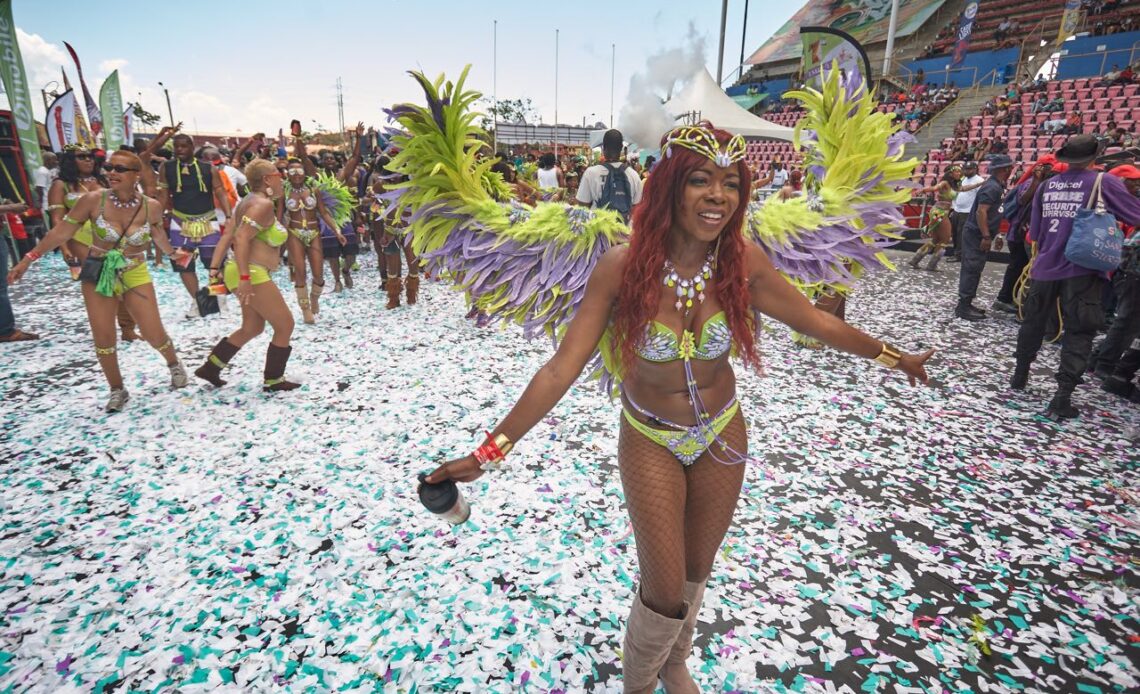
Above: SocaDrome, 2015: Tribe’s Wings of Desire crosses the stage. The photographs accompanying this story illustrate the many streets and feeder routes that are part of the Parade of the Bands on Carnival Tuesday. All photographs by Mark Lyndersay.
It is 6:00 am on February 21, 2023 and the city of Port of Spain in the Caribbean island of Trinidad is starting to come alive. It is the final day of the two-month Carnival season and three hundred thousand people are preparing for a grand climax that is unique among the carnivals of the world.
The city has been converted into a huge playground in which a hundred and thirty carnival bands, varying in size from fifty to five thousand or more will parade along a route of about ten kilometers of streets and avenues that were carefully selected to form a complete loop.
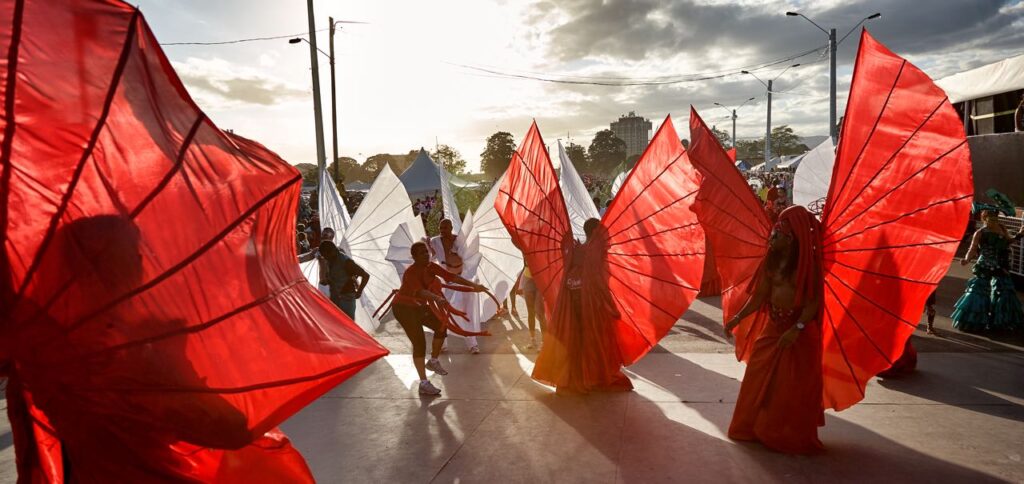
The route meanders from the Queen’s Park Savanah, the huge expanse known as the lungs of Port of Spain, through the neighborhood of St. Clair to the community of St James at one extreme then back towards the downtown area, passing through the Hasely Crawford stadium and the community of Woodbrook. From downtown, the loop swings “behind the bridge” and passes by the general hospital and the Memorial Park, and back to the Savanah.
At even intervals of about one kilometer all around the loop are the Starting Points of the ten largest carnival bands. In front and behind of each are the medium sized bands, and in the center of each stretch of the loop between the big bands are the smaller bands and the Individual characters. Six months previously the band leaders drew their Starting Points – and negotiated exchanges – so masqueraders and spectators alike knew well in advance where and when to meet up.
Evenly spread through the bands are the music trucks, and dawn on Carnival Tuesday finds them getting their acts together: the disc jockeys starting their generators and checking their equipment, and the musicians in the few live bands tuning up their instruments.
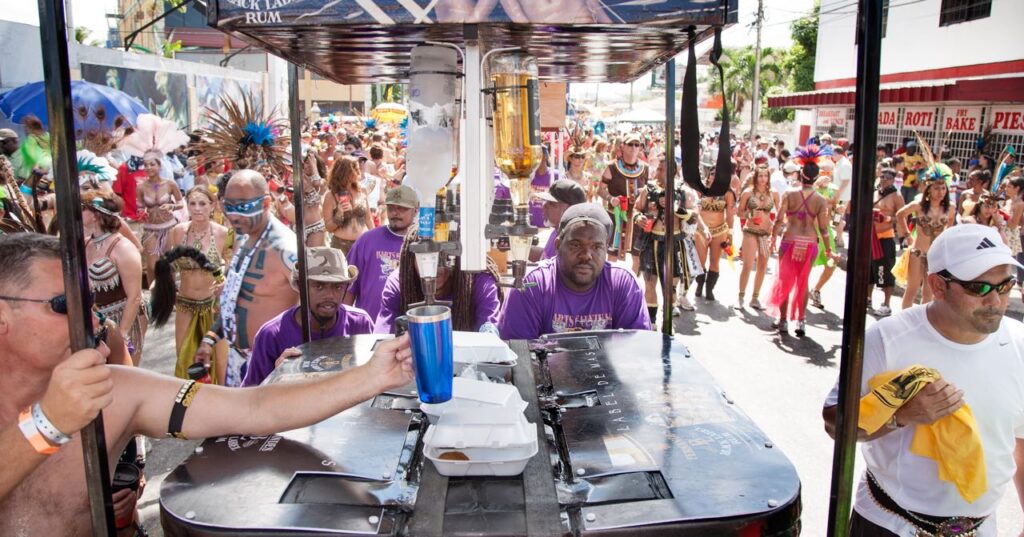
The masqueraders gather in increasing numbers around the music trucks, greeting each other, eating breakfast and adjusting their costumes. They are standing around or sitting on the curbs, and their families are settling down for the day in the many viewing stands along the route which will gradually fill up with spectators as the morning progresses.
The music starts to play at a low volume; the early morning air is filled with the chatter and laughter of hundreds of voices, and there is a growing excitement in the crowds.
And then, at precisely 8:00 am, the drivers in all the trucks simultaneously blow their horns sending a mighty blast across the city. The music is turned up to full volume and the entire loop begins to move. The Carnival Parade is on its way and the greatest show on Earth has begun.
Over the next ten hours every band will pass through every Starting Point along the route, with the whole parade stopping at noon for a lunch break of one hour. The bands grow in size as the latecomers join in, after catching a free ride on the taxis crisscrossing the city. The younger masqueraders will be on the road for the entire day; the older folk for a few hours as their bands pass through their neighborhoods.
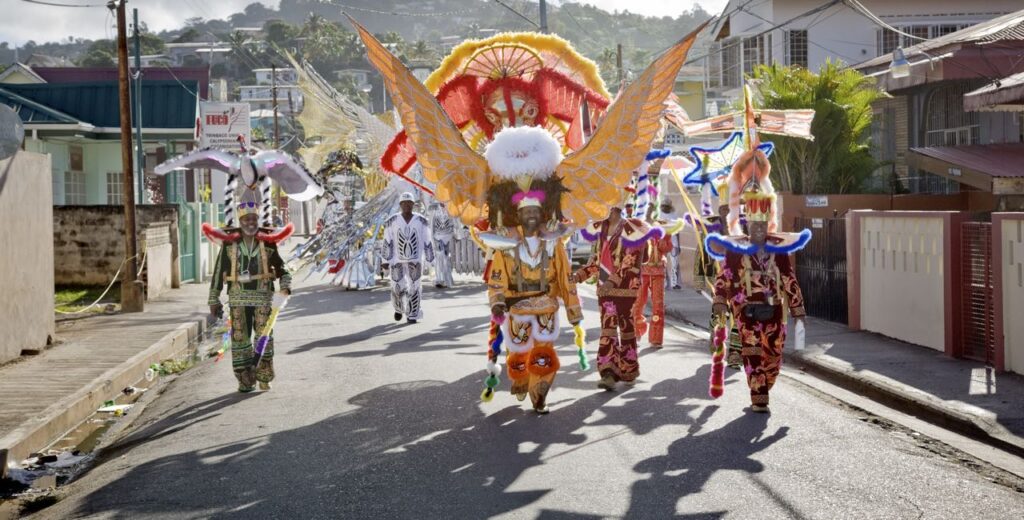
All along the loop there is nonstop excitement for the spectators as band after band passes through. There are ten “stages” at judging points on which the Kings and Queens and the other major characters will parade, even if they are too cumbersome to traverse the entire route. One section of the parade is reserved solely for Trinidad’s famous steelbands and the air is filled with only the glorious sound of pan for a couple of hours as that section passes.
Gone from the parade are the drinks trucks and “wee wee” trucks of years gone by. Near each of the ten Starting Points, some of which have been hubs of Carnival activities since December, are rest areas, first-aid, bathrooms and large bars where all masqueraders, as they pass by, can freely refill their cups with ice and the drinks of their choice (indicated by the wristbands they purchased in advance). If they pause to rest and fall behind they can always catch up at another point ahead on the loop.
Since there is a continuous parade of bands, vendors are spread out evenly along the route, and so too are the many spectator stands, large and small, which allows the masqueraders, their families and their friends to coordinate their meetups over the course of the day.
Masqueraders can join their bands when they are ready; drop out for a break, and rejoin the parade whenever they feel like since the location of their bands on the loop can be easily calculated from the amount of time that has passed. Indeed, a whole band can leave the loop for a while, and resume their place in the parade at a predicted point.
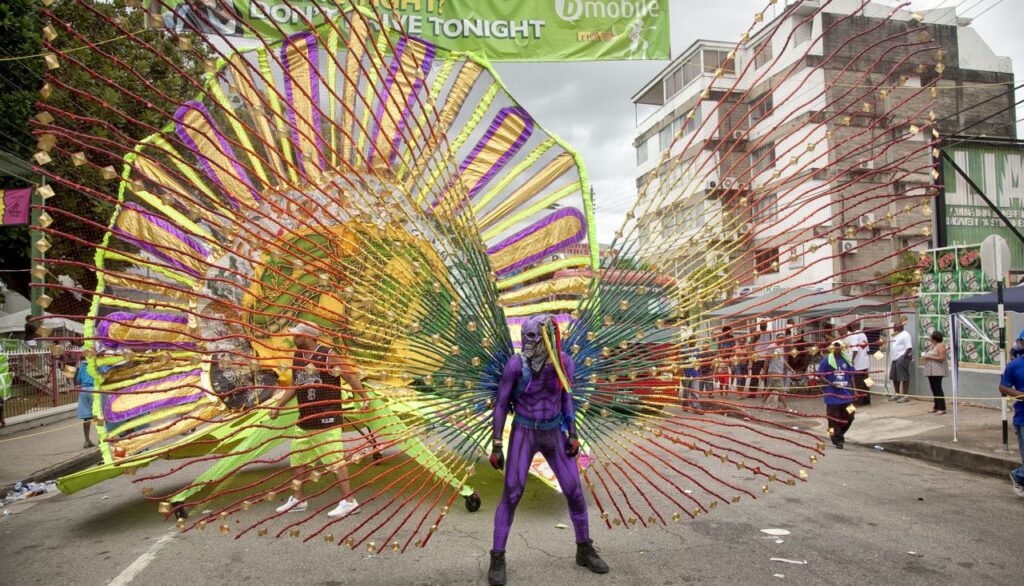
Loop section managers along the route coordinate with a central monitoring station that is in phone contact with all the truck drivers. This ensures that the whole parade keeps moving at the same average pace of about one kilometer per hour, with bands speeding up and/or slowing down in order to arrive on time at each Starting Point along the route. If a truck breaks down or a King’s costume needs fixing, it can drop out for repairs and take a shortcut to get back in the parade. If a section of a band doesn’t want to follow the whole route, it can do the same.
The city has a number of special arrangements in place for this day. The only vehicles parked inside the loop belong to home and business owners and overnight visitors. There are several large parking areas outside of the loop with free shuttles into the city from 6:00 am, and there is a fleet of taxis providing a crisscross of free transport within the confines of the loop. All other traffic is restricted to specific routes across the city with a limited number of loopholes manned by traffic cops through which vehicles can cross the parade route.
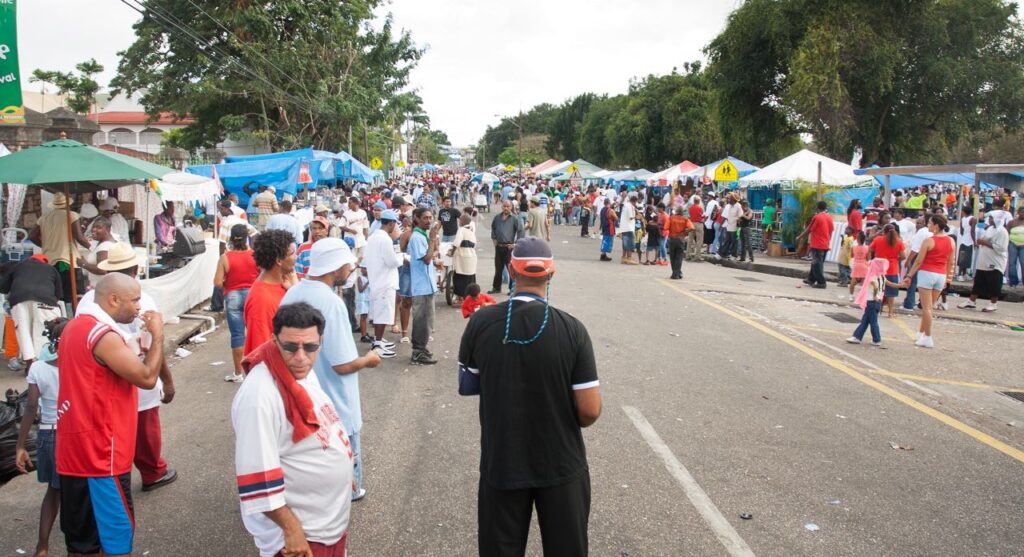
And so, in 2023, for the first time in the recent history of this Carnival parade there is no congestion, no boring wait for bands to pass, no jostling among vendors for the prime spots, no frantic searching for a parking spot, no long walks across the city to find bands or to get home.
All band movements are coordinated like a well-oiled machine. There are equal opportunities for every designer to be fairly judged on several stages, resulting in a renewed burst of creativity. Kings, Queens and other large costumes can move from stage to stage, directly or along with the bands.
Spectators are thus assured of a nonstop ten-hour spectacle, and masqueraders of any age can join in the fun, if only for an hour or two. There are high quality facilities all along the route – for those on the road and for those who look on. Even those who remain at home are assured of a spectacular show all day long on television.
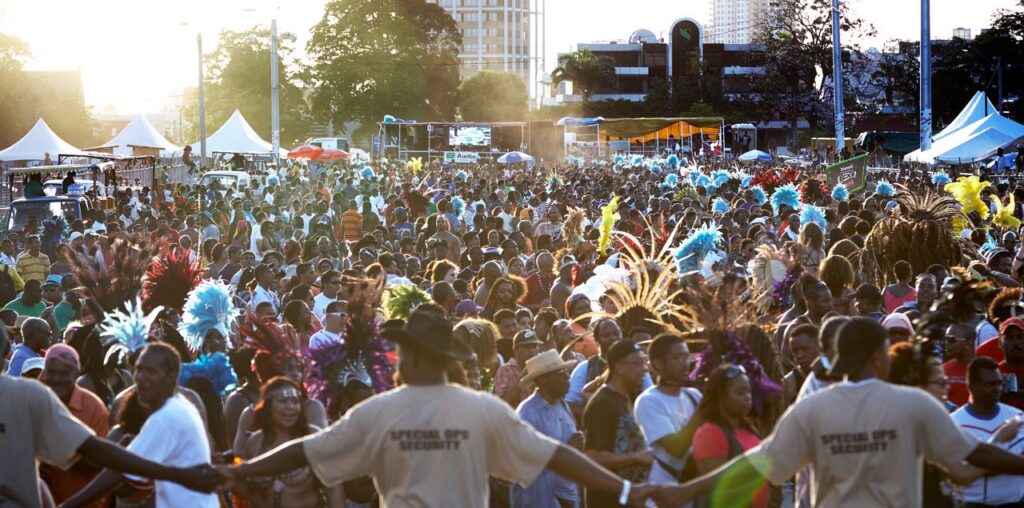
In 2023 we will have had three long years to reimagine the world famous Trinidad Carnival which has seen a steady decline in quality if not in size. Despite the glitzy promotions focused on the masqueraders, the fact is, a vast majority of the participants in the overall experience is the spectators, and over the years there has been less and less of a spectacle to enjoy.
Most of the large bands have become primarily money-making parties on the road, albeit really well organized and quite a lot of fun, but with total disdain for the crowds that line the routes waiting on the intermittent excitement, not to mention those watching on television who will probably be more amazed by the behavior of some of the masqueraders than the costumes on display.
It is not too late to plan a better experience for masqueraders and spectators alike in 2023, or at least in 2024. All that is required is the will to challenge the naysayers and those with a vested interest in the status quo. Peter Minshall’s last great presentation was called, presciently, “The Dying Swan”; a metaphor for the Trinidad Carnival. The Swan must not be allowed to die.
This is the vision laid out in detail in Dr Frankson’s publication entitled “The Carnival Loop” and available in PDF for free by sending him an email.
About the author
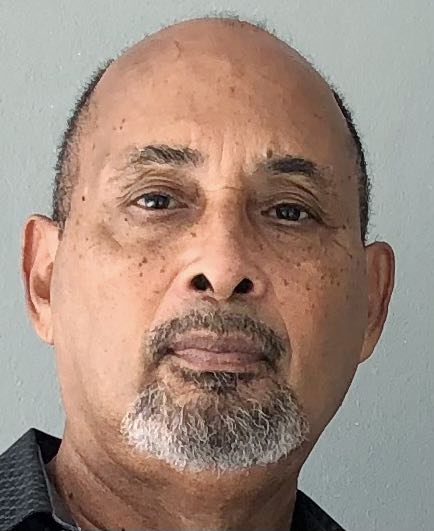
Dr. Geoffrey B. Frankson is a Belize National Scholar, a medical doctor and a Rhodes Scholar with a degree in Human Sciences from Oxford University. He was a board member of the NW Regional Health Authority, a member of the Vision 2020 sub-committee on health, the Essential National Health Research Council, and the Gafoor Commission of Inquiry into the public health services.
Under the pseudonym D.R. Coldson and later, his own name, he was a columnist in the Express for seventeen years, and has published books on child sex education and wellness, and numerous articles in various periodicals. He was the founder/CEO of Better Health Ltd. which set up the first Wellness Centre in Trinidad, and is the Principal Consultant for Wellness Caribbean Ltd.
He has lectured on health promotion across the Caribbean, and was a consultant on a Caricom project on poverty and health. He was in the first T&T national squash team, with tours to Barbados, Guyana, Jamaica and the Bahamas, and is an avid golfer. As a member of the Port of Spain Jaycees, he was the first to put a steelband, Solo Harmonites, in concert by itself at Queen’s Hall.
He won the Prime Minister’s Award for Innovation and Invention in 2004; won a Special Award in the same competition in 2015, and has patents pending on four other inventions. Dr. Frankson first played mas as a student on the UWI Mona campus in a band called “Sailors Ashore in Hawaii” and made a film about it.
He next played mas with Ken Morris’ band coming out of Belmont, and has only missed two Carnivals since then, having been a masquerader in virtually all the major bands in Trinidad and Tobago.

